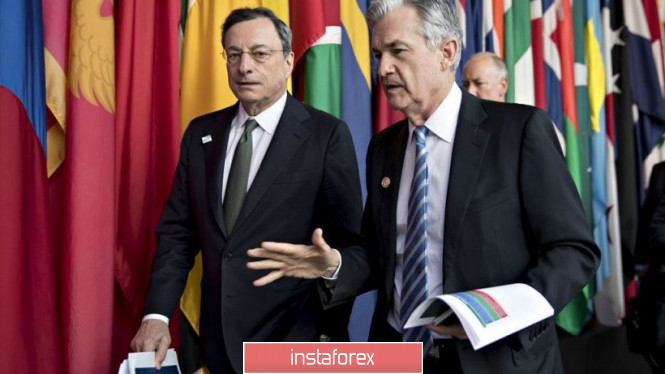Despite the strong downward momentum, bears of the euro-dollar pair could not overcome the support level of 1.1070, which corresponds to the lower line of the Bollinger Bands indicator on the daily chart. Although sellers tested this target on Friday, the trading week ended at around 1.1090. Germany unexpectedly came to the aid of the European currency. Representatives of the German government said that Berlin could allow a budget deficit by loosening budget saving rules and abandoning a zero-deficit policy. It is worth noting that the Germans have always been very conservative in this matter, so traders were surprised at Angela Merkel's position, who allowed fiscal stimulation and, as mentioned above, the budget deficit.

It is worth noting here that the German Constitution limits the increase in federal debt to 0.35% of the nominal volume of economic production, subject to GDP growth. However, in crisis situations, the law provides the government with certain agility. After much debate, Berlin nevertheless expressed readiness for action, and this fact provided some support for the euro. The financial impetus from Germany is especially important in the context of the September meeting of the ECB. According to some analysts, this step on the part of the Germans will allow members of the European regulator not to resort to extremely aggressive measures to soften the parameters of monetary policy.
However, this fundamental factor will soon lose its influence. The dollar will be in the spotlight again, which in turn will focus on key events of the coming week. First of all, we are talking about the economic symposium, which takes place annually in the small American town of Jackson Hole, in Wyoming.
It is no secret that this symposium is called the "barometer" of the sentiment of the central banks of the leading countries of the world. The forum is attended by the heads of the central banks (usually at the level of chairmen or their deputies) of the leading countries of the world, finance ministers, leading economists and analysts, and leaders of major world conglomerates and banking giants. For three days they discuss urgent problems, crystallize certain signals and determine the main dotted lines of further steps. As a rule, the financial world elite discusses the most pressing problems that are currently relevant. For example, in 2015, the number one topic was the collapse on the Shanghai Stock Exchange, in 2016 they talked about the consequences of Brexit, and in 2017 - the expansion of bond spreads and further steps by the Fed and the ECB. Last year, the central theme of the meeting was the trade war between the United States and China (or rather, its consequences). Obviously, this year the topic of global trade conflict will again be in the spotlight, as well as the impending Brexit.
But these are all common topics: during the three-day symposium, the heads and representatives of many central banks will speak, who can talk about their future actions in the context of monetary policy prospects. In particular, on Friday, Fed Chairman Jerome Powell is expected to speak - if he takes a dovish position, the US currency will receive an impetus to decline throughout the market, including paired with the euro. However, the latest releases of US statistics retain the intrigue regarding the tonality of the rhetoric of the head of the Federal Reserve. Nonfarm data recovered after the spring slowdown, inflation accelerated, retail sales rose. If Powell focuses on these factors, then the dollar can get significant support, and EUR/USD bears will arrive at the bottom of the 10th figure.

Also this week the minutes of the last Fed meeting will be published. Against the backdrop of the Jackson Hole Symposium, this release will be of secondary importance, however, it may also affect the pair's volatility. For example, the minutes of the June meeting of the Federal Reserve showed that regulator members have different opinions on inflation in the country. According to some officials, the growth rate of inflation indicators does not cause concern, according to others, this growth is unstable. The rhetoric of this minutes put pressure on the US dollar until Jerome Powell debunked investors' fears with its optimism about the growth of key inflation indicators in the second half of the year. Apparently, a similar situation is expected this week. If Powell's speech resonates with the rhetoric of the Fed minutes, then the market reaction will only intensify, against the background of other fundamental factors. In any case, the Fed minutes will be seen through the prism of news from Jackson Hole.
Thus, the events of this week make it possible to bring the euro-dollar pair from the price band, determining the vector of further movement. The main task of EUR/USD bears is to overcome the "round", psychologically important mark of 1.1000. The task of the pair's bulls is to stay above this target, and for fidelity, to rise to the boundaries of the 12th figure. By and large, many central bank leaders this week will "reveal the cards" regarding their further actions. Against this background, all other fundamental factors (macroeconomic reports and comments of "ordinary" members of the central bank) will be of secondary importance.
The material has been provided by InstaForex Company - www.instaforex.com